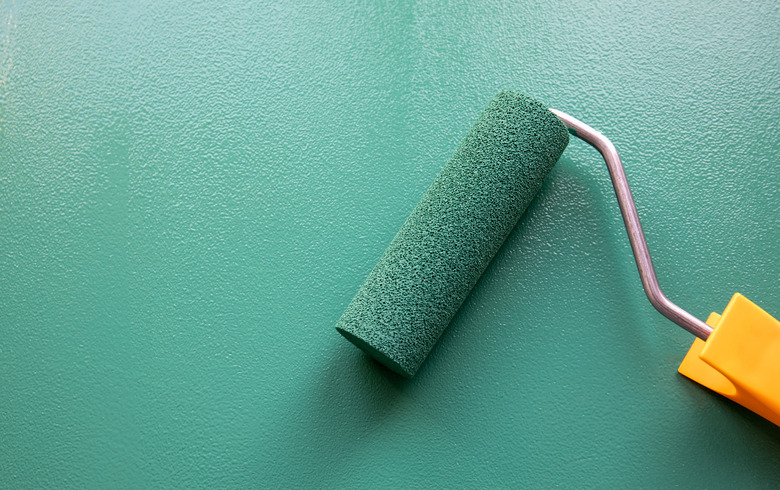How To Get A Paint Sample Off A Wall
We may receive a commission on purchases made from links.
There are a lot of ways to try to find the color of your existing paint so you can buy new paint to match, but many methods are unreliable. For example, you could take a picture of the wall, but if your camera quality isn't great or if the lighting isn't just right, the resulting color might not be a perfect match. Sometimes, the best option is to actually take a sample from the wall itself.
Find an Inconspicuous Area
Find an Inconspicuous Area
The downside with taking a paint sample directly off your wall is that it's impossible to do so without damaging the wall. That's why it's important to find a section of wall that is inconspicuous so people won't see the damaged area.
Look for an area close to the ground since people tend to see parts of the room at eye level and above more than they see areas near the floor. If you have a piece of furniture up against the wall that you believe will be in the same place for years to come, you may want to get a sample from behind it. However, if your paint seems to be sun bleached at all and you want to match the part of the wall with sun damage, be sure to get a sample from the sun-damaged area.
Cut Out a Sample and Have It Analyzed
Cut Out a Sample and Have It Analyzed
Use a razor blade to cut out a square between 1 and 2 inches wide. Don't push so deep into the wall that you actually cut through the drywall but just hard enough to cut off the paper on the surface of the drywall.
Take the paint sample to the paint store, where the employees can use a spectrophotometer to find the closest hue to the color on your wall. It's worth noting that while paint stores can match your new paint very closely to your sample, the paint may not be a totally perfect match to your wall because of the proprietary nature of paint formulations.
That being said, the new color will probably be close enough to look convincingly similar to the existing paint on your wall. If you want things to match perfectly, you may just be better off painting the entire room so the old color is entirely covered.
